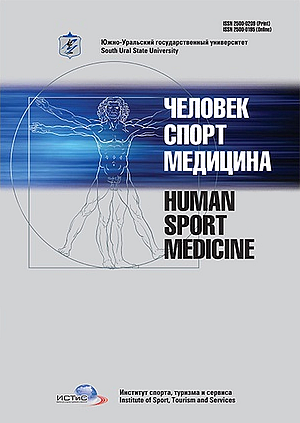SOME ASPECTS OF RUNNING EFFICIENCY ASSESSMENT
Abstract
Aim. The article deals with the assessment of the approach to efficiency analysis of the selected locomotion based on the assessment of oxygen consumption per mass unit (VO2/kg/km) in participants with various morphological statuses. Materials and methods. We assessed aerobic capacity in male runners (middle and long distances, n = 7), orienteering athletes (n = 7), hockey players (n = 17), football players (n = 25), swimmers (n = 24), tennis and badminton players (n = 10). The participants have a rank from First-Class Athlete to Master of Sport of the Russian Federation. We used load tests with increasing load: 2-minute warm up, test load increasing by 1 km/h per minute starting from 7 km/h, 2-minute cool down. We conducted tests with the help of Cosmos Quasar treadmill and Metalyzer 3B gas analyzer (Germany). Results. Athletes from different groups did not demonstrate any statistically significant differences in running efficiency depending on speed. There are no intergroup differences in terms of oxygen consumption during the test. Oxygen consumption at different speeds does not change significantly depending on the kind of sport. Efficiency assessment requires using parameters which do not include fat component. Conclusion. The calculation of oxygen consumption per unit of fat-free mass allowed us to reflect most accurately the efficiency of running techniques without complex systems of video analysis and taking into account different speed and acceleration components of the barycenter as well as other details of biomechanical efficiency. This is very important at the beginning of sports specialization when, apart from physiological development and adaptation, it is possible to assess and correct running technique efficiency.
Copyright (c) 2019 Human. Sport. Medicine

This work is licensed under a Creative Commons Attribution-NonCommercial-NoDerivatives 4.0 International License.















